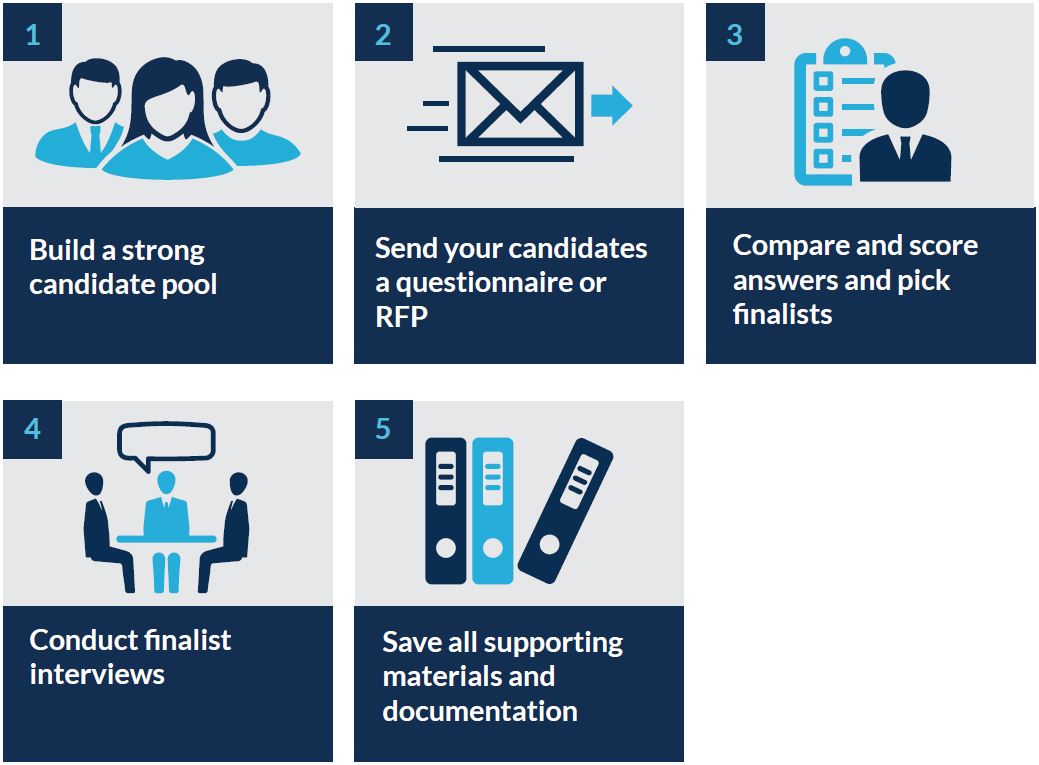Your Employee Benefits Broker: An Essential Hire
 | SHRM WEBCAST: Don’t Get Bitten by COBRA Administration
In this session, George Lemmon from SHRM BrokerFinder and Gentrie Pool from ConnectYourCare provide explanations of COBRA’s many regulations and how to determine who is eligible for coverage. You’ll learn from historic COBRA case law to help you avoid negative legal ramifications and make better strategic policy decisions, plus much more.
Available to watch on-demand now!
|
What is the difference between benefits brokers, consultants and advisors?
When should a company shop for a new broker?
- You question whether your broker is keeping up with the myriad of regulatory and technological change in the marketplace
- You aren’t clear on the value you are getting from your broker for the commission or fees you are paying
- You haven’t shopped in more than 3 years
- You aren’t sure you are getting the day to day service you need or deserve
Five Steps for Optimal Broker Selection:
Step 1: Build a Strong Candidate Pool
Step 2: Develop a Request for Proposal (RFP) for candidates
- Who you are.
- Why you are considering a new broker.
- How the broker can reach you with questions and to learn more as needed. If the broker has to operate in a “black hole”, it is unlikely they will reply.
- The RFP supports the rest of the process, which includes other communication such as phone calls, emails and meetings at your discretion.
Here are core RFP/Questionnaire topics we recommend employers use:
- The company’s ownership structure. This is important because you may find you prefer a local, regional or national firm.
- Biographies and experience levels of the team that will serve you.
- Fees and/or commission schedule. Also make sure they agree to transparency of payments from 3rd party carriers and vendors they represent.
- Verification that the broker has proper licensing and adequate E&O coverage.
8. Enrollment and Employee Services
Step 3: Compare and score answers from your candidates and pick finalists.
Step 4: Conduct Finalist Interviews
Step 5: Archive materials from your selection process, and any broker agreements provided to you.
We hope this guide has given you a clear perspective on the broker selection process and is useful as you leverage employee benefits to build a great company. SHRM's BrokerFinder can help you find and hire the right employee benefits broker for your company. The online platform provides a national, searchable marketplace of broker candidates and an easy-to-use request for proposal (RFP), so companies can score and assess candidate responses as part of their evaluation process.
Was this resource helpful?






